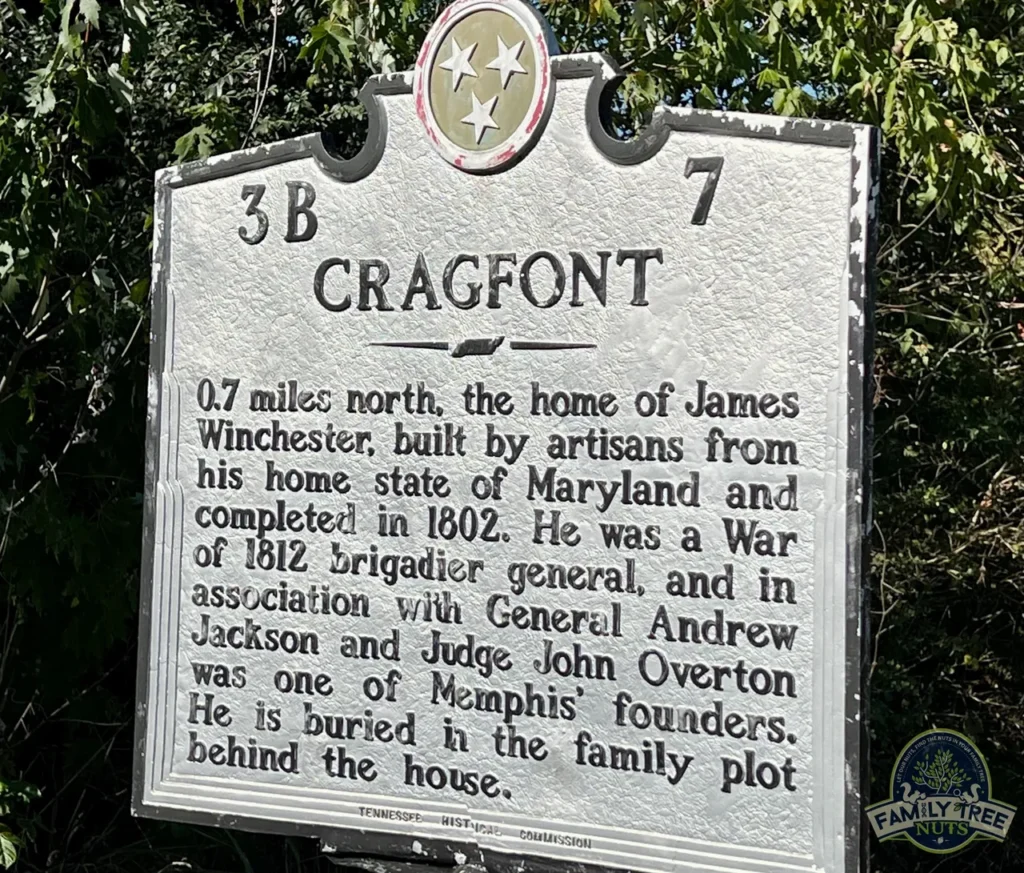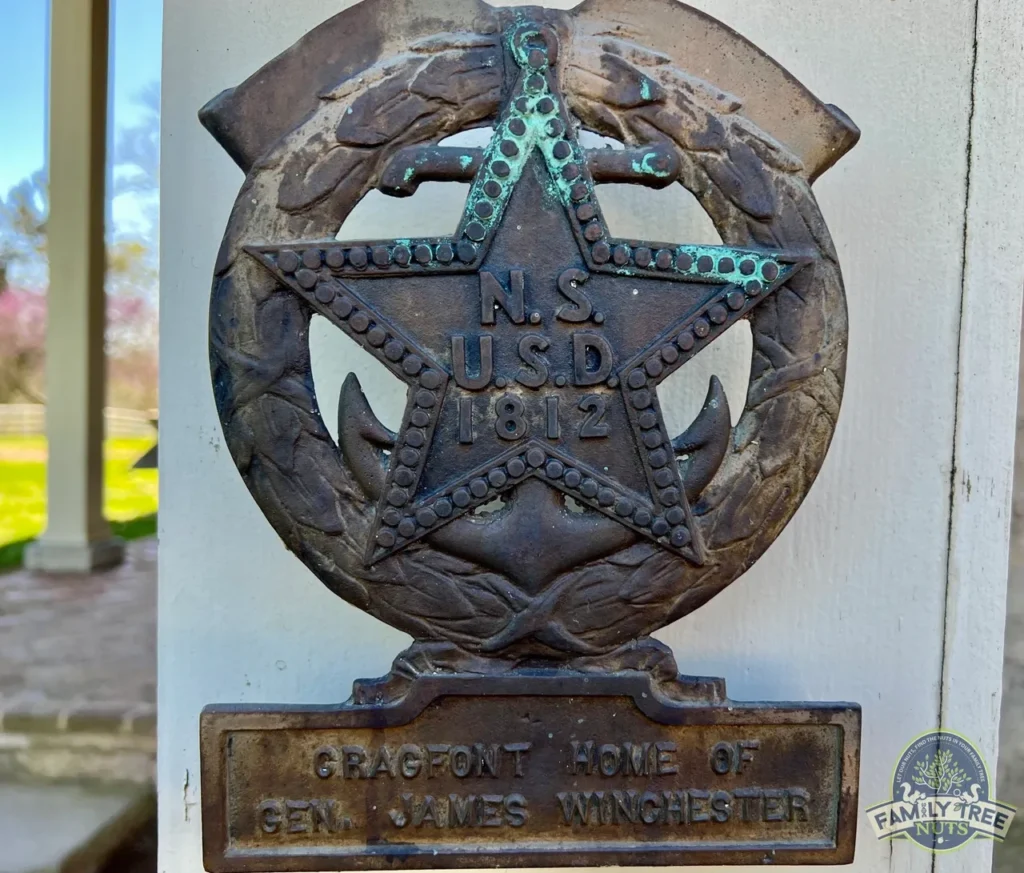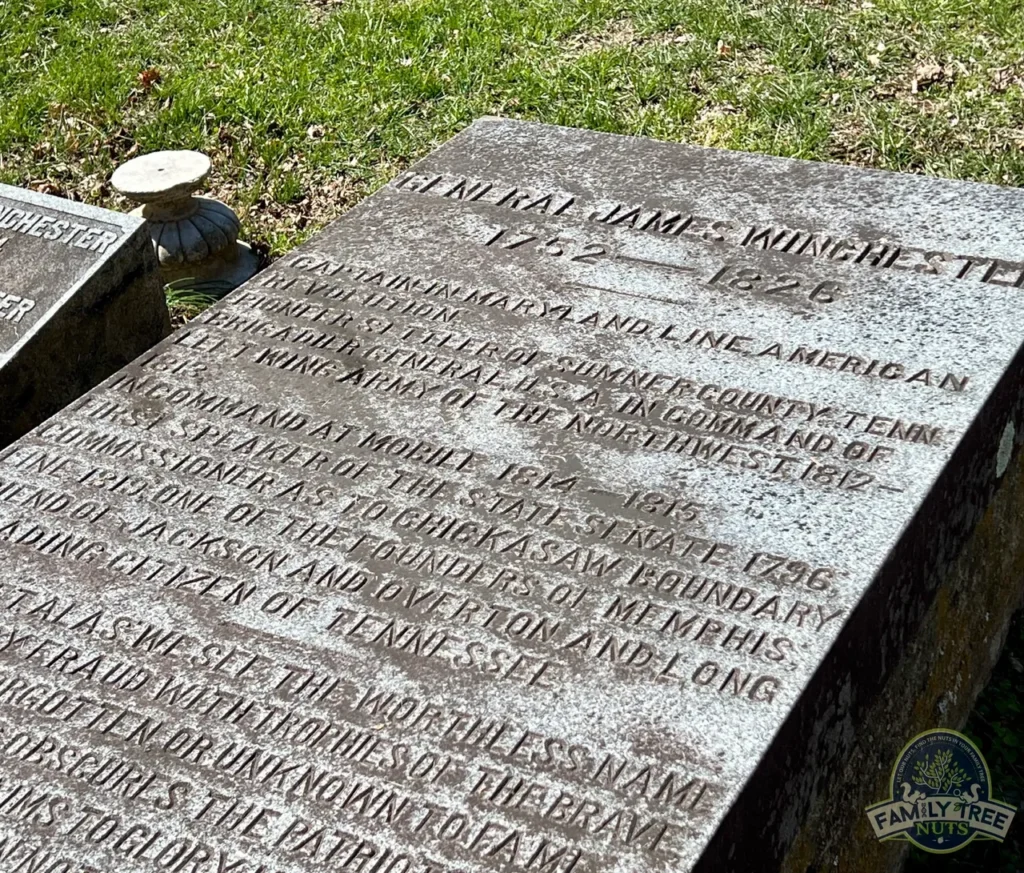
GEN. WINCHESTER, PATRIOT & PIONEER! CRAGFONT HISTORY!
Serving in the Maryland Line during the American Revolution, he soon moved West to claim new land given for his service in the Continental Army. General James Winchester, military commander, entrepreneur, pioneer, Indian fighter and later, founder of the city of Memphis.

Cragfont Mansion, in Castalian Springs Tennessee, is the frontier home of General James Winchester, hero of the American Revolution and War of 1812.
When this house was built, General Winchester had already been a soldier for many years and he was actually known to be present with General George Washington at the surrender of General Charles Cornwallis and the British Army at Yorktown, Virginia. Serving in in the 3rd Maryland Regiment of the Continental Army, he was present at the battle of Staten Island, while covering for General Washington’s retreat from New York. During that battle, he was wounded, captured, and kept on a British prison ship in New York Harbor for a year. Later after a prisoner exchange, he joined General Nathanial Greene’s army in South Carolina where he fought at the Battle of Charles Town.
While serving during the Revolution, George and his brother James Winchester heard of the beauty and fertility of the Cumberland Country, now known as Middle Tennessee, and they were determined to join fellow soldiers and others who had recently founded settlements having Nashville as their center. The region was named for the Duke of Cumberland, commander of the English Army that defeated Bonnie Prince Charlie at Culloden during the Jacobite Uprising of 1745.

In 1785, James and George Winchester moved to the new Tennessee frontier to begin a new life on Bledsoe Creek. They named it Cragfont. It was situated within one mile of the Bledsoe Station that was founded by Colonels Anthony and Issac Bledsoe about the same time.
The Winchesters were sons of aristocratic families back in the old colony of Maryland. They had the courage and strength to move west as pioneers to help establish the future United States west of the Appalachian Mountains.
Many left their eastern seaboard estates for the rich, fertile soil of Middle Tennessee, where frontier life promised to be difficult with harsh conditions to live. Land had to be cleared, wood chopped, water secured, food preserved, and homes built just to ensure basic survival. Looking at the house today, it’s hard to imagine that this homestead started as a frontier fort called Fort Tuckahoe. The Winchesters lived there with a few other families for protection against raids by the local Indians. It was here that they built a sawmill, distillery and their first cabin.

In 1792, General James Winchester married a local pioneer woman named Susan Black and over the years they raised a family of twelve children. Once the Indian raids ended at about 1800, General Winchester hired carpenters and stone masons from Maryland to draw a design and along with enslaved workers they began construction on his home. It was built of limestone quarried on the property and is still standing today. It’s owned by the Tennessee Historical Commission and listed on the National Register of Historic Places. It’s managed by Historic Cragfont Incorporated, which operates the site today and is open for tours from April to October.
The house was built on a river bluff and very elegant for its day, especially considering the fact that it was located in the Tennessee wilderness. It was a true back country mansion. It was furnished with fine carpets and furniture made by General Winchesters skilled nephew William Winchester, Jr. Much of the furniture was crafted of local cherry wood and a number of the pieces are still in house today.
It was located on the old Holston Road, which in those days was the main route from Nashville, across the Cumberland Plateau and through to Knoxville. As you would expect, it was landmark for many travelers who would stop by to spend the night at the house, which was ever expanding, it even included a ballroom that was used to entertain many of the guests that visited.

Later in life James Winchester’s military service resumed as he was called into the United States Army as a Brigadier General to serve in the War of 1812. During that time, he fought the British, Canadians, and their Indian allies at Fort Wayne, and commanded at the Battle of River Raisin. After a crushing defeat at River Raisin, he was held prisoner by the British Army in Quebec for a year. He was returned in a prisoner exchange. At that time he joined General Andrew Jackson in New Orleans for that epic battle. While away, his wife Susan continued to raise the children and run the farm.
After the war, James Winchester returned to Cragfont to join his wife and family. They had to produce most of what they consumed as there were no stores yet in the region. The Winchesters operated a small farm store, mill, and post office on their property which provided much needed hard cash to purchase goods for their home and farm. Their gardens produced corn, grains, beans, and potatoes for the family, along with some beef and pork from livestock raising. Everything from material, clothes, to linens had to be made there on the farm.
James also had many other business interests in the new and growing Sumner County, Tennessee. In addition to his mill operation at Cragfont, he formed a mercantile partnership with William Cage, another Sumner County entrepreneur and the two established the river port of Cairo, on the north bank of the Cumberland River, adjacent to the mouth of Bledsoe Creek. Winchester also invested in a cotton factory that was in operation from 1812-1819. These businesses enabled him to expand his interests in shipping and international trade.

And it was here in Tennessee where he worked his farm and businesses, while also serving in several political positions in the county. He died in 1826, and his wife Susan spent the next few years raising her twelve children alone at Cragfont. Susan died in 1864, but in her old age, in 1840, their youngest son, George Washington Winchester returned to the estate with his wife Malvina Gaines-Winchester, and they made their home there, and continued to raise nine children of their own on the estate.
Here ends the story of James and Susan Winchester. Soldier, pioneer, entrepreneur, and statesman. A true American hero who helped establish new American frontier. They along with members of their family are buried on the estate, close by the house and garden. Be sure to see the video below from the location.
-Scott Denney, Historian, Family Tree Nuts
